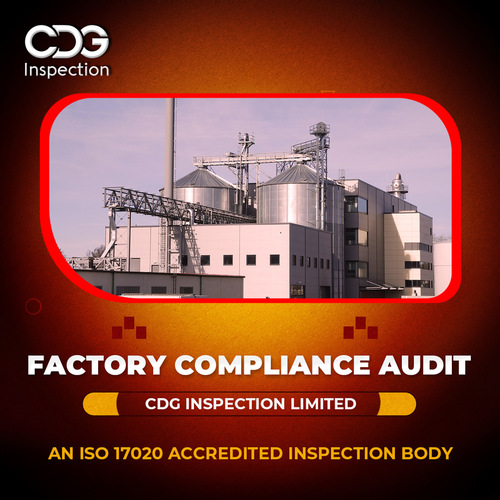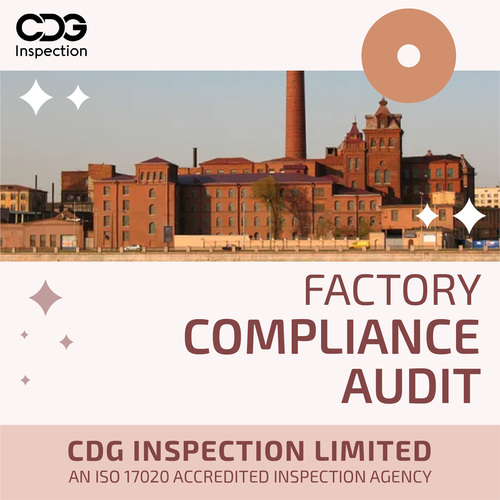Factory Compliance Audit in Faridabad
Factory Compliance Audit in Faridabad Trade Information
- Main Domestic Market
- All India
About Factory Compliance Audit in Faridabad
CIL Provides Accredited Factory Compliance Audit Services in Faridabad, Haryana, India. A compliance audit is a review performed to ascertain an enterprises adherence to regulatory guidelines. Audit reports evaluate the strength and comprehensiveness of an organizations compliance preparations, security policies, user access controls. There are many types of compliance audits, including technical, financial, operational, and cyber security audits. Factory Common compliance audits include, a) HIPAA (Health Insurance Portability and Accountability Act of 1996) b) PCI DSS (Payment Card Industry Data Security Standard) c) SOC 2 (system and organization controls, a data security audit specifically designed for service providers that store customer data in the cloud) d) SOX (Sarbanes Oxley Act of 2002) compliance audits(auditing and financial regulations for public companies) Compliance Auditing Guidelines, These guidelines contain the framework for the process of compliance auditing within the Indian Audit and Accounts Department headed by the Comptroller and Auditor General (CAG) of India hereinafter referred as IA&AD. The officers and the staff of IA &AD must follow these guidelines in planning, implementation, reporting, observing follow up processes and obtaining quality assurance in compliance audits. They outline principles, objectives, approach, methodology, techniques and procedures for conducting compliance audits. These guidelines are based on the existing guidelines and instructions applicable. Applicability, These guidelines have been formulated to suit the requirements of IA &AD. These provide detailed instructions on preparation of audit plan for compliance risk profiling and reporting for compliance audits. However, the detailed audit checks to be performed while conducting compliance audits prescribed in the MSO (Audit) and the existing area specific checklists, instructions and guidance notes dealing with audit of contracts, fraud and corruption, quality and timelines etc. would continue to remain applicable. Scope for individual initiative and professional judgement, While these guidelines are prescriptive in nature, they are not intended to supersede the professional judgement of the Accountant General, relevant to specific situations. The Accountant General is expected to make situation or subject specific adjustments to the provisions set out in these guidelines. However, Accountants General will be expected to document the rationale of all significant departures from the guidelines. Audit Mandate, The audit mandate of IA&AD is derived from the Articles149 & 151 of the Constitution of India. Article 149 of the Constitution of India envisages that CAG shall perform such duties and exercise such powers in relation to the accounts of the Union, of the States and of any authority or body as may be prescribed by or under any law made by Parliament. Article 151of the Constitution of India provides that the reports of the CAG of India relating to the accounts of the Union or a State government shall be submitted to the President or the Governor of the State respectively, who shall cause them to be laid before each House of Parliament/ Legislature of the States. The statutory position is established under the CAGs (Duties, Powers and Conditions of Service), Act 1971. In addition to above, Audit mandate is governed by other provisions in the Constitution and other acts of Parliament which provide for audit of specific entities by the CAG. The audit mandate of CAG, therefore, extends to bodies or authorities such as statutory authorities, statutory corporations, government companies, autonomous bodies legally organised as societies, trusts or not for profit companies, urban and rural local bodies (the third tier of government below the Union and State Governments) and also to any other body or authority whose audit may be entrusted to the CAG under law. All these entities follow different systems. Factory Compliance audit report, A compliance audit is a comprehensive review of an organizations adherence to regulatory guidelines. Audit reports evaluate the strength and thoroughness of compliance preparations, security policies, user access controls and risk management procedures over the course of a compliance audit.
Tell us about your requirement

Price:
Quantity
Select Unit
- 50
- 100
- 200
- 250
- 500
- 1000+
Additional detail
Mobile number
Email

 Send Inquiry
Send Inquiry






 Send Inquiry
Send Inquiry Send SMS
Send SMS Call Me Free
Call Me Free